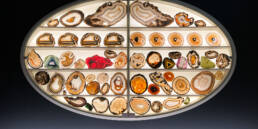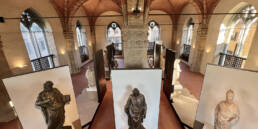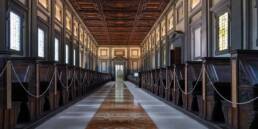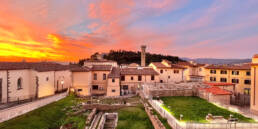Living in a major tourist city allows you to develop an internal radar that helps you differentiate tourist trap restaurants from “the good ones” in any city. The following are some tips based on our experience of how to find a good restaurant in Florence. This is not to say that you won’t get a decent meal at some of the more touristy places, but you might eat something tastier, more “typical”, or less expensive if you follow these simple guidelines.
What to avoid:

1) Any restaurant with a giant plastic chef outside holding up a menu.
2) said menu especially if in four or more languages.
3) suspiciously long menus with tons of variety, ranging from pizza and pasta to fish and meat. As a general rule, it is more likely that a restaurant tends to do one thing really well than everything well.
4) bars with sandwiches displayed in a window facing outside, especially late in the afternoon or evening. If you pass by a closed bar with sandwiches in the window at night, don’t even think of going there the next day.
5) bars with similar outside-facing displays containing prepared plates with assortments of “primi” (pasta). How long have they been sitting there?
6) restaurants that start serving at 6pm. You know that means they cater to Americans. Italians eat out starting at 8pm but usually even later, especially down South.
7) bars and restaurants across from any Duomo (with the exception of in smaller towns).
What to look for:
1) At lunch, bars filled with well-dressed businessmen serving themselves to tables at which you don’t pay extra (for example in Florence, Chiaroscuro on via del Corso).
2) bars with lots of stickers on the window. Look for ones that say “ticket restaurant” (a red circle and blue writing) or “pass”. These bars tend to be frequented by people who work in the area (esp. at lunch), and serve well-priced and fresh “primi” (pasta dishes, vegetables and the like), which are displayed inside in large containers from which they will scoop you out a portion.
3) restaurants that have been accepted as either “Slow Food” or Trattorie d’Italia (and are listed on those guides). Michelin also a valid indicator though less seen these days in italy.
4) small osterie (wine bars) with limited dinner menus. Often these are the places that will tell you about their wines, and serve delicious fresh food to go with it.
5) restaurants with unpretentious decor — wooden benches and paper mats. Best if said restaurant is full of italians.
6) As opposite to point 3 of what to avoid, look for places with limited menus — 3-4 primi and 3-4 secondi, hand written nightly. Some good restaurants will simply dictate the menu to you; this is for the more adventurous, but it is OK to ask first and also to ask them to repeat it very slowly or in halting english!! (In this case, try to get confirmation of prices, too!)
7) small restaurants that are always full and for which you have to reserve. If just arriving in a town, walk around at 6pm to find a place that looks good, and go in to ask about the menu and if they’ll hold you a table for 8pm or later. We’ve found our favourite restaurants this way.
Buy the book: I highly recommend arming yourself with copy of this book by Emily Wise Miller:
Sign up to receive future blog posts by email
Alexandra Korey
Alexandra Korey aka @arttrav on social media, is a Florence-based writer and digital consultant. Her blog, ArtTrav has been online since 2004.
Related Posts
January 30, 2024
Florence Museum News 2024
January 5, 2024
The Architecture of Michelangelo’s Laurentian Library
July 19, 2023




